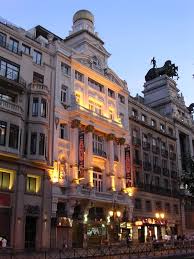En muchos países la televisión
retransmite una gran cantidad de programas hechos en el extranjero. El dominio
del entretenimiento importado es perjudicial para las culturas de estos países.
Todo empezó con el famoso ‘Gran Hermano’ y ahora cada país tiene los mismos
programas. ¿Es esto bueno?
Existen muchos
programas extranjeros que son adaptados por cada país. Por ejemplo si pensamos
en un ‘reality show’, el nombre de ‘Gran Hermano’ viene inmediatamente a
nuestras mentes. El primer programa fue retransmitido en los Países Bajos en
1999 y algunos años más tarde cada país del mundo copió el formato y lo adaptó
y lanzó sus versiones. Esto fue el principio del dominio del entretenimiento importado.
Un punto
importante es que el entretenimiento es el 60% de la televisión como mayoría en
todo el mundo. Como hemos visto en el ejemplo de ‘Gran Hermano’, cada país
copia la misma idea y adapta el producto para su audiencia televisiva.
Esto es bueno
porque podemos ver el mismo programa en diferentes idiomas. De hecho, esto es
un buen camino para entender las diferentes culturas y maneras alrededor del
mundo.
Por otra parte,
teniendo los mismos programas se ha creado un monopolio televisivo. Esto afecta
en el sentido si un ‘reality show’ es famoso y tiene mucha audiencia, cada país
querrá comprar el formato y reproducirlo. Pero el real problema es que las
pequeñas productoras no tienen suficiente dinero para producir sus propios
productos por lo que ellos tendrán que invertir su capital comprando exitosos
programas extranjeros.
En conclusión,
esto es un círculo vicioso. La solución podría ser hacer acuerdos entre todas
las productoras de televisión. De este modo cada una tendría la oportunidad de
producir sus propios productos. Pero quizá las grandes compañías no estarían de
acuerdo con esto porque la televisión es un negocio. En este caso, los
gobiernos deberían intervenir creando leyes que pudieran controlar la cantidad
de televisión importada y dar la oportunidad de crecer a la televisión local.
Ruth Martín.
THE DOMINANCE OF IMPORTED ENTERTAINMENT
In many
countries television shows a lot of foreign-made programs. The dominance of
imported entertainment is harmful to the cultures of these countries.
Everything started with the famous ‘Big Brother’ and now every country has the same
programs. Is this good?
There are a lot of foreign-made
programs which are adapted for every country. For example if we think of a
reality show, immediately ‘Big Brother’ comes to our minds. The first program
was broadcast in Netherlands in 1999 and some years after every country in the
world copied the format and adapted and broadcast their versions. This was the
beginning of the dominance of imported entertainment.
A further point is that
entertainment is 60% of television such a majority is the same in all the
world. As we have seen with the ‘Big Brother’ example, every country copies the
same idea and adapts the product for its television audience.
This is good because we can see the
same program in different languages. In fact, this is a very good way to
understand differences in cultures and manners around the world.
On the other hand, having the same
programs has created a television monopoly. TV is affected by this because if a
reality show is famous and has a big audience, every country will want to buy
the format and broadcast it. But the real problem is that small production
companies do not have enough money to produce their own products as they will
have to spend all their capital on buying successful foreign-made programs.
In conclusion, this is a vicious
circle. The solution could be making agreements between all the production
companies. So everyone would have the chance to produce their own product. But
maybe big companies would not agree with this because television is a business.
So in this case, governments should come into play and passing laws could
control the amount of imported TV that there is and give locally made
television a chance to grow.
















